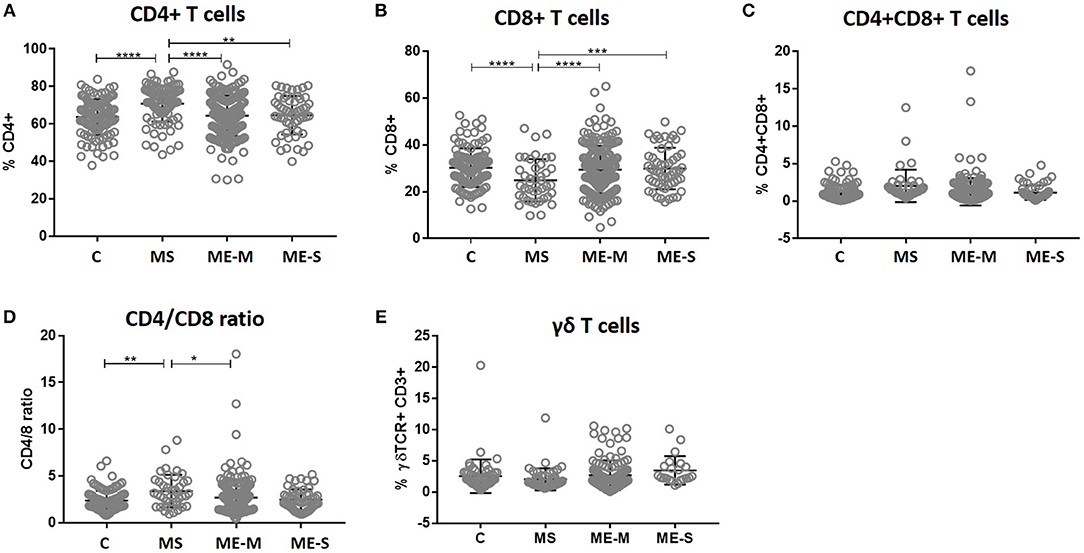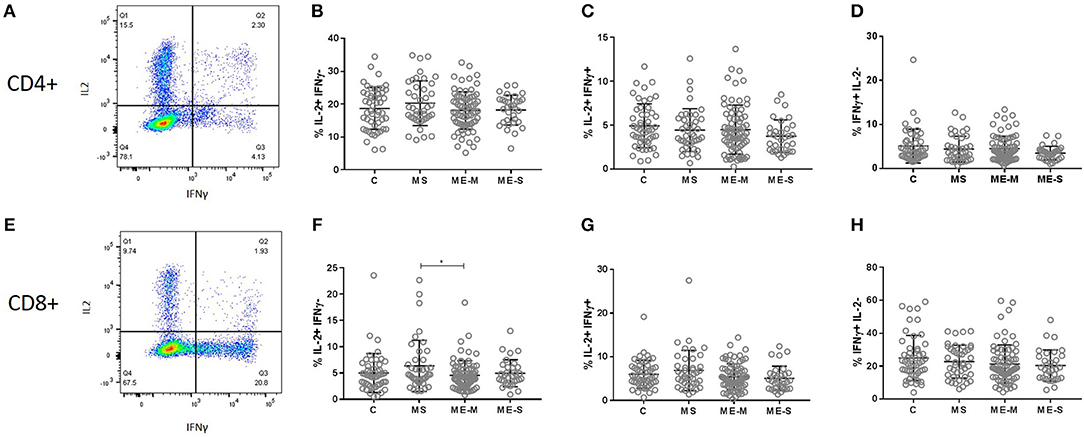cassava7
Senior Member (Voting Rights)
This post has been copied and following discussion moved from this thread:
USA: NIH National Institute of Health
The NIH has awarded a $2.5M R01 grant to Drs Liisa Selin and Anna Gil for their work on altered T cells in ME/CFS. This follows their 2019 Ramsay award from Solve ME with which they obtained pilot data.
Press release from the Massachusetts ME/CFS Association: https://www.massmecfs.org/images/pdf/Selin_MassME_Press_Release_03162021.pdf
Grant information on the NIH Project Reporter: https://reporter.nih.gov/search/-PkzeikTlEGEpI8GsfKW0A/project-details/10185392
USA: NIH National Institute of Health
The NIH has awarded a $2.5M R01 grant to Drs Liisa Selin and Anna Gil for their work on altered T cells in ME/CFS. This follows their 2019 Ramsay award from Solve ME with which they obtained pilot data.
Press release from the Massachusetts ME/CFS Association: https://www.massmecfs.org/images/pdf/Selin_MassME_Press_Release_03162021.pdf
Grant information on the NIH Project Reporter: https://reporter.nih.gov/search/-PkzeikTlEGEpI8GsfKW0A/project-details/10185392
Myalgic encephalomyelitis/chronic fatigue syndrome (ME/CFS) is a complex disorder affecting numerous organ systems and biological processes. Published data seems to suggest that ME/CFS may be preceded by infection, and the chronic manifestation of illness may represent an altered host response to infection, or an inability to resolve inflammation.
Previous studies focused on perturbation in cytokines and metabolism have also shown that CD8 T responses are decreased in ME/CFS. In preliminary studies we examined the frequency, functional and phenotypic status of CD8 T cells to determine whether they were altered in chronic ME/CFS donors as compared to healthy donors. We observed an increased CD4:CD8 ratio, altered expression of exhaustion/activation markers like CTLA4 and 2B4 on CD8 T cells, and decreased production of IFN, TNF and CD107a/b upregulation following PMA stimulation, all suggesting CD8 T cell exhaustion. This was associated with a, perhaps compensatory increased frequency of activated CD4+CD8+ T cells in the ME/CFS donors as compared to healthy controls. Notably, a subset of the CD8 and the CD4+CD8+ T cell populations were spontaneously producing atypical cytokines, subdividing ME/CFS donors into two subsets: type 1 had an increased frequency of FoxP3+helios+ Treg-like cells producing IL9 (female donors); type 2 had FoxP3+helios- cells producing IL17 (male donors). When we examined the T-cell receptor (TCR) repertoire of the CD4+CD8+ T cell population we found evidence of antigen driven clonal expansions to an unknown antigen at this time, whether it will be a viral or auto-antigen.
We hypothesize that the common theme in ME/CFS is an aberrant response to an immunological trigger like infection, which results in a permanently dysregulated immune system as a result of CD8 T cell exhaustion. These studies will identify potential biomarkers and mechanisms driving the immunopathogenesis of ME/CFS leading to future therapies. We will explore this hypothesis in the following Aims.
Aim 1 we will examine altered CD8 and CD4+CD8+ T-cell responses in ME/CFS: 1) we will determine if the level of CD8 T cell exhaustion varies with ME/CFS type 1 (female) and Type 2 (male) response and with the severity of ME/CFS symptoms using a larger ME/CFS cohort; 2) we will examine EBV antigen-specific responses in ME/CFS donors to determine if a common persistent virus response is altered by the immunosuppressive state of CD8 T cell exhaustion and further contributing to the disease state of ME/CFS; 3) microarray analyses will be done on sorted activated T cell subsets to assist in understanding the alterations in the functionality of the exhausted and activated CD8 and CD4+CD8+ T cell subsets in ME/CFS donors.
In Aim 2 we will examine TCR repertoire of CD8 and CD4+CD8+ T-cell subsets for evidence of antigen driven clonal expansion. Defining the characteristics of the activated clonally expanded CD8 and CD4+CD8+ T cells would be a major step in the field potentially leading to the identification a specific infectious or auto-antigen response that could be the main driver of CD8 T cell exhaustion and the immunological basis of ME/CFS.
ETA: The MassME press release links to a presentation from September 2020 and a conference poster with Seliin and Gil's preliminary findings.Previous studies focused on perturbation in cytokines and metabolism have also shown that CD8 T responses are decreased in ME/CFS. In preliminary studies we examined the frequency, functional and phenotypic status of CD8 T cells to determine whether they were altered in chronic ME/CFS donors as compared to healthy donors. We observed an increased CD4:CD8 ratio, altered expression of exhaustion/activation markers like CTLA4 and 2B4 on CD8 T cells, and decreased production of IFN, TNF and CD107a/b upregulation following PMA stimulation, all suggesting CD8 T cell exhaustion. This was associated with a, perhaps compensatory increased frequency of activated CD4+CD8+ T cells in the ME/CFS donors as compared to healthy controls. Notably, a subset of the CD8 and the CD4+CD8+ T cell populations were spontaneously producing atypical cytokines, subdividing ME/CFS donors into two subsets: type 1 had an increased frequency of FoxP3+helios+ Treg-like cells producing IL9 (female donors); type 2 had FoxP3+helios- cells producing IL17 (male donors). When we examined the T-cell receptor (TCR) repertoire of the CD4+CD8+ T cell population we found evidence of antigen driven clonal expansions to an unknown antigen at this time, whether it will be a viral or auto-antigen.
We hypothesize that the common theme in ME/CFS is an aberrant response to an immunological trigger like infection, which results in a permanently dysregulated immune system as a result of CD8 T cell exhaustion. These studies will identify potential biomarkers and mechanisms driving the immunopathogenesis of ME/CFS leading to future therapies. We will explore this hypothesis in the following Aims.
Aim 1 we will examine altered CD8 and CD4+CD8+ T-cell responses in ME/CFS: 1) we will determine if the level of CD8 T cell exhaustion varies with ME/CFS type 1 (female) and Type 2 (male) response and with the severity of ME/CFS symptoms using a larger ME/CFS cohort; 2) we will examine EBV antigen-specific responses in ME/CFS donors to determine if a common persistent virus response is altered by the immunosuppressive state of CD8 T cell exhaustion and further contributing to the disease state of ME/CFS; 3) microarray analyses will be done on sorted activated T cell subsets to assist in understanding the alterations in the functionality of the exhausted and activated CD8 and CD4+CD8+ T cell subsets in ME/CFS donors.
In Aim 2 we will examine TCR repertoire of CD8 and CD4+CD8+ T-cell subsets for evidence of antigen driven clonal expansion. Defining the characteristics of the activated clonally expanded CD8 and CD4+CD8+ T cells would be a major step in the field potentially leading to the identification a specific infectious or auto-antigen response that could be the main driver of CD8 T cell exhaustion and the immunological basis of ME/CFS.
Last edited by a moderator:


